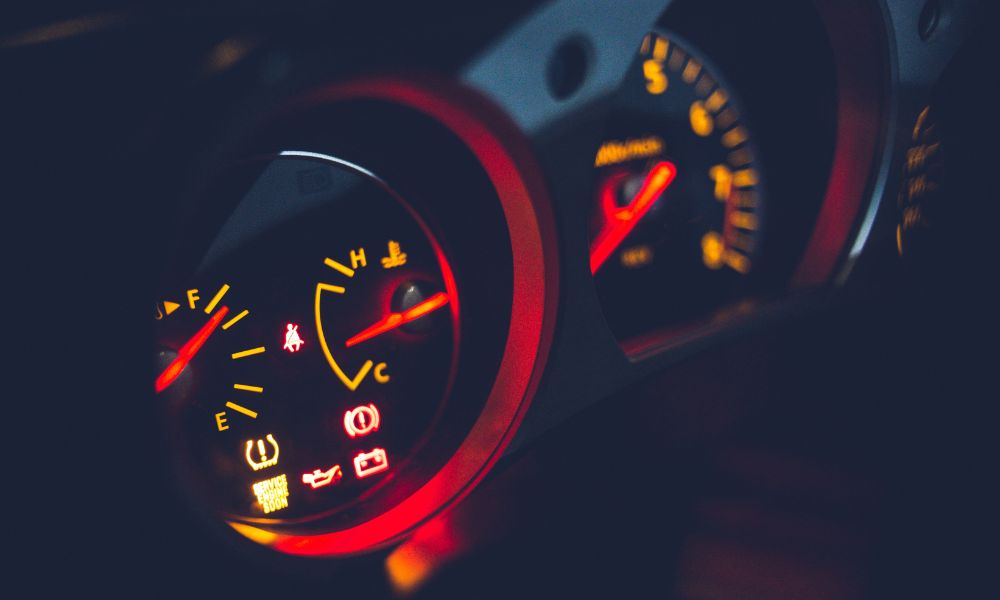I get commissions for purchases made through links in this post.
Under-inflated tires are one of the most common concerns when it comes to your car’s regular maintenance and is also one of the easiest to avoid. In fact, sitting in my driveway right now is my 2007 Chevy Tahoe, which has low air on both the right front tire and the rear left, and I need to make sure it gets resolved ASAP.
Ultimately, I need to get it up to the optimum tire pressure for a typical passenger vehicle, which is around 30 to 35 PSI (PSI = “pounds per square inch”). A tire pressure less than this is considered under-inflated.
What happens if you drive on under-inflated tires? If you drive on under-inflated tires, the tires will wear unevenly and eventually fail. It can also cause your tires to perform incorrectly, leaving you with a lower level of maneuverability. Too low of air pressure in tires can even cause them to lose the bead (the contact point between the tire and the wheel) and immediately lose all pressure within seconds.
Table of Contents
Three Effects of Driving on under-inflated tires

1. Excessive fuel consumption
Tires significantly affect how much fuel you use every time you drive your car. Under-inflated tires result in a higher rolling resistance, with a larger portion of the tire being in contact with the ground. This can lower your gas mileage dramatically, costing you money and putting more strain on your drivetrain than it should.
2. Premature wear on your tires
When a tire is under-inflated, too much sidewall (the part without tread) comes in contact with the road surface. The larger amount of friction raises the heat on the sidewall’s surface and wears it out. This can cause separation of the tire’s tread, or wear a crack in the side and result in blowouts.
Not only is replacing your tires due to low tire pressure a pain, and can leave you stranded on the side of the road. It also can be extremely expensive, as many vehicles that are AWD (all-wheel-drive) require you to replace all four tires at the same time.
3. Lower Ride Quality & Vehicle Damage
Did you know that tires play a big part in the ride quality of your vehicle? When you don’t have your tires inflated correctly, the tires cannot take the impact of potholes, uneven roads, and that curve you took too quickly. This can cause your suspension to work more than needed and damage your vehicle.
Three signs of an under-inflated tire
Of course, like many things on your vehicle, if your tires are under-inflated, there will be some telltale signs that this is the case!
1. Tire Pressure Monitoring System (TPMS)
The purpose of the TPMS in a car is to alert you when the tire pressure is below the ideal pressure. Once the tire pressure falls below the set value, the TPMS light blinks on your dash (or and icon or message your gauge screen) to indicate something wrong. You should make sure to check the pressure of each of the four tires, or the specific tire that it is notifying you about as soon as possible.
2. Longer Stopping Distance
When under-inflated, tires are not running at their tested capacity, meaning they aren’t allowing your vehicle to stop nearly as quickly as they should when at the correct pressure. The car moves for a longer distance before making a complete stop. If you can’t stop as quickly as you should, or believe you will, this can make for some dangerous circumstances.
3. You aren’t as maneuverable
Tires place a big roll in your steering, and may decrease when driving on an under-inflated tire. If you find turning or general maneuvering difficulties with the steering wheel, check the tire pressure; one of the four may be spoiling your driving time.
Are there times when under-inflating your tires is good?
Most of the time, you should have your tires properly inflated; off-roading is the primary time it is okay to under-inflate your tires. When off-roading, having additional tire tread contacting the ground will give you better grip and traction and allow you to overcome obstacles quickly.
That said, you should never do this with standard tires, and should make sure to purchase all-terrain tires (Paid Link), as they have tread on the sidewalls to account for this and won’t puncture from sharp rocks.
Did you know…?
The Bugatti Veyron is one of the fastest cars in the world, especially when it first was released back in 2005. To reach those massive speeds of over 240 miles per hour, it required special tires. These tires were glued to the wheels, and the cost to replace the tires is over $42,000. To top it off, you only get 1,875 miles (or 1.5 years) before you need to replace them, according to Bugatti.
Tips for maintaining a proper tire pressure
- Check the tire pressure in the morning when it is cold and pressure is not affected by heat or movement.
- Choose an accurate gauge like this one (Paid Link) to avoid over or under-inflating the tire when measuring tire pressure.
- Inflate to the required pressure. Refrain from over-inflating or under-inflating.
- When checking pressure during the day, ensure the tire is cooled for at least three hours before using the pressure gauge to get an accurate reading.
Frequently Asked Questions
Does cold weather affect nitrogen-filled tires?
Like normal air, different air temperatures will also affect nitrogen-filled tires. In cold air, you will likely want to add some air; in warmer air, you will want to lower them back down to what your car manufacturer calls for.
Should I put air in my tires when it’s cold?
You should always pay attention to your tire pressure, and cold weather generally results in lower tire pressure. This isn’t because you lose air but because the air tends to expand in the summer heat and contract in the winter cold.
How often should you put air in your tires?
Most people recommend continuously checking everything on your car every time you drive; however, every week, you should at least be keeping an eye on your tire pressure. This generally will result (if you have good condition tires) in adding or removing some tire pressure every couple of months.
Need a quick recap?
Driving on an under-inflated tire causes tires to wear due to increased friction with the road surface. It may also lead to tire failure, with puts the driver and passengers in the car in danger. We should learn to check our car pressure routinely to avoid the risks and costs of driving on an under-inflated tire.





